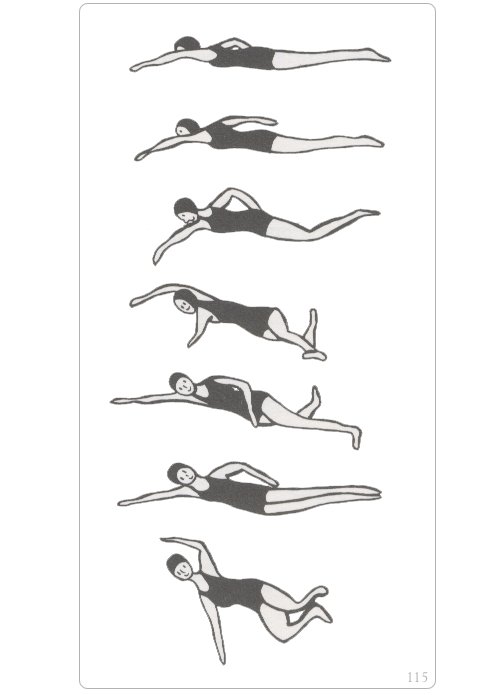PS: Swimming-strokes which are shown in bold
are being discussed on this page.
| Legend: |
|
|
* |
= a difficult swimming-stroke to swim or impractical |
|
|
|
 |
|
||
|
|
This swimming-stroke looks like the long Trudgeon where the body position is rolling from a horizontal position to a vertical position on the side. The arms make a double overarmstroke which means that the trailing- and the leading arm making a full pull through. The legs make a scissor-kick followed by some crawl-kicks familiar of the frontcrawl. The combination of the arms and legs is long, all followed by a long gliding-phase on the side (about 2 seconds). In the past this swimming-stroke was the greatest long distance stroke which was swum while crossing the English Channel. 
|
|
|||
|
|
|
|
|||
|
|
|
 |
|
|
|
This swimming-stroke looks like the long trudgeoncrawl except with a wide scissor-kick and one crawltick. Difficult swimming-stroke to swim. |
|
|
|
|
|
|
|
|
|
 |
|
|
|
|
This swimming-stroke looks also like the long trudgeoncrawl. The only difference is that the combination of the arms and legs is semi-long. Also a difficult swimming-stroke to swim, just like with the previous stroke. |
|
|
|
|
|
|
|
|
|
|
 |
|
||
|
|
Looks like the long trudgeoncrawl. The legstroke, however, is a wide scissor-kick followed by a frog-kick. Very interesting swimming-stroke! 
|
|
|||
|
|
|
|
|||
|
|
 |
|
|
|
|
Looks like the long trudgeoncrawl. The legstroke, however, is very different; it's a noshi-kick followed by crawl-kick. |
|
|
|
|
|
|
|
|
|
|
 |
|
|
|
The last swimming-stroke on this page is the long trudgeoncrawl with closed scissor-kick and looks like the long trudgeoncrawl. The difference here is also mainly the movement of the legs; a closed scissor-kick or an inverted scissor-kick is made followed by a few crawl-kicks. This swimming-stroke is good to swim and got rated at 7 on a scale of 10. |
|
|
|
|
|
|
|